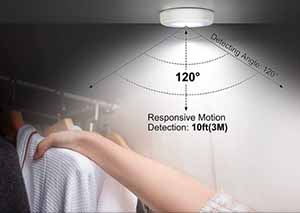Lighting is an essential aspect of our lives, and advancements in technology have made it possible to have intelligent lighting systems. Smart lighting technologies are not only energy-efficient, but they also enhance convenience and comfort while reducing the carbon footprint. With the increasing demand for energy efficiency, the smart lighting market has witnessed tremendous growth over the years. In 2022, the size of the Indian LED lighting industry was 3.4 billion dollars. The market is anticipated to develop at a compound annual growth rate (CAGR) of 23.38% from 2023 to 2028, according to IMARC Group. The growth is attributed to the increasing demand for energy-efficient lighting solutions and the government’s initiatives to promote LED adoption. LED lighting is the dominant segment in the Indian lighting market, accounting for around 70% of the total market share. The residential segment is the largest end-user segment, accounting for more than half of the market share. The government’s UJALA scheme, which aims to promote LED adoption in households, has been a significant driver for LED demand in the residential segment.

LED lighting is one of the most widely used smart lighting technologies, as it is energy-efficient and can last up to 50,000 hours. Motion sensors are used to detect movement and turn on/off the lights accordingly, while smart switches allow users to control their lights remotely. Daylight harvesting is a smart lighting technology that uses sensors to measure the natural light entering a space and adjusts the artificial lighting accordingly.
Here are some of the latest technology advancements in the smart lighting sector. As technology continues to evolve, we can expect even more innovative solutions in the future:
Voice control
Voice control is becoming increasingly popular in smart lighting systems. With voice control, you can use a smart speaker or a smartphone to turn on/off the lights, dim them, or change the colour. Amazon’s Alexa and Google Assistant are some of the most popular voice assistants used in smart lighting systems.
Motion Sensor Lights

Temporary switches known as motion sensor lights activate the lights when a sensor detects movement in its range of vision. After any detected movement, the light will stay on for a certain period of time and will stay on while movement takes place. The motion sensor switch will turn the lights off after some time of inactivity.
IoT integration
IoT integration is another major trend in the smart lighting sector. IoT-enabled lighting systems can be connected to other devices, such as sensors, cameras, and HVAC systems, to create a smart building ecosystem. This can improve energy efficiency, enhance safety and security, and increase comfort and convenience. Smart plugs are also becoming increasingly popular accessory that connects to a power outlet and a light, appliance, or other item to make it smart and enable voice or app control.
Human-centric lighting
Human-centric lighting is a smart lighting technology that takes into account the human circadian rhythm and adjusts the light colour and intensity accordingly. It can improve sleep quality, boost mood and productivity, and reduce the risk of chronic diseases.
In conclusion, smart lighting technologies offer numerous benefits, including energy efficiency, convenience, comfort, and enhanced safety and security. Human-centric lighting, Voice control, LiDAR sensors, and IoT integration are some of the popular smart lighting technologies. The Indian lighting market is poised for growth, driven by the increasing demand for energy-efficient lighting solutions and the government’s initiatives to promote LED adoption. The residential segment is the largest end-user segment, and the UJALA scheme has been a significant driver for LED demand in households. As smart lighting technologies continue to evolve, we can expect even more innovative solutions in the future.













